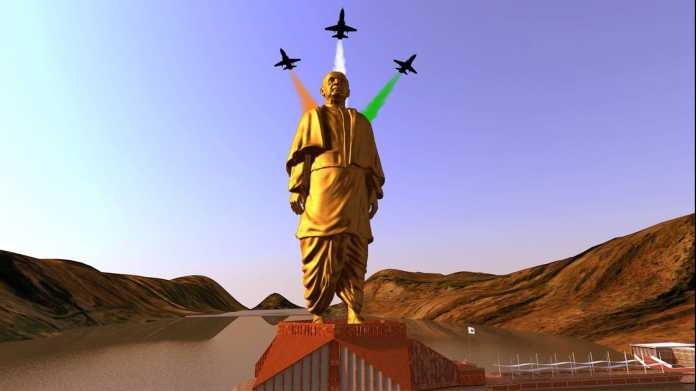Prime Minister Narendra Modi has unveiled the world’s tallest statue, The Sardar Vallabhai Patel Statue, on the same day as the independence leader’s birthday. Patel was instrumental in uniting a completely divided nation, and is also known as the ‘Iron Man’ of India.
The statue is expected to be a major tourist attraction in Gujarat. The statue was constructed despite opposition from local tribal leaders who objected to the destruction of land for the construction of the gigantic statue. “Instead of spending money on a giant statue, the government should have used it for farmers in the district,” a farmer was quoted saying.
At the unveiling, Modi stated that the statue is a symbol of “India’s integrity and resolve.” Flowers were showered on the statue from Air Force Planes flying over it. Here’s what makes it unique –
- Designed by Ram V. Sutar, the project amounted to approximately Rs. 3,000 crore ($400 million)
- Work on the 600-foot statue began almost 33 months ago, with a team of over 3,000 workers and 250 engineers. Hundreds of labourers were also flown in from China to help with the construction of the statue.
- The concept of the statue was envisioned as Sardar Patel walking on the Narmada River towards the Sardar Sarovar Dam.
- The core of the statue is made up of 210,000 cu.m of cement concrete and 18,500 tonnes of reinforced steel. It is also filled with 1,700 tonnes of Bronze and 1,850 tonnes of the Bronze cladding.
- Called the ‘Statue of Unity’, various state of the art technologies have been employed for its construction. The process also involved numerous mockups, 3D scanning, and numerical control production to ensure accuracy in the most minute of details.
- One of the many challenges for the engineers was at the very base of the statue. The walking pose of Sardar Patel called for a 21-foot wide gap between the feet, which make the statue the weakest at its base.
- Being located in the middle of the Narmada River, engineers also had to ensure that the statue could withstand heavy wind speeds. The statue has the capability to withstand 130 kmph of wind and earthquakes of upto 6.5 on the Richter Scale.
- Visitors can take in the surround picturesque view from viewing gallery at the chest of the statue, located at a height of 153 m.































